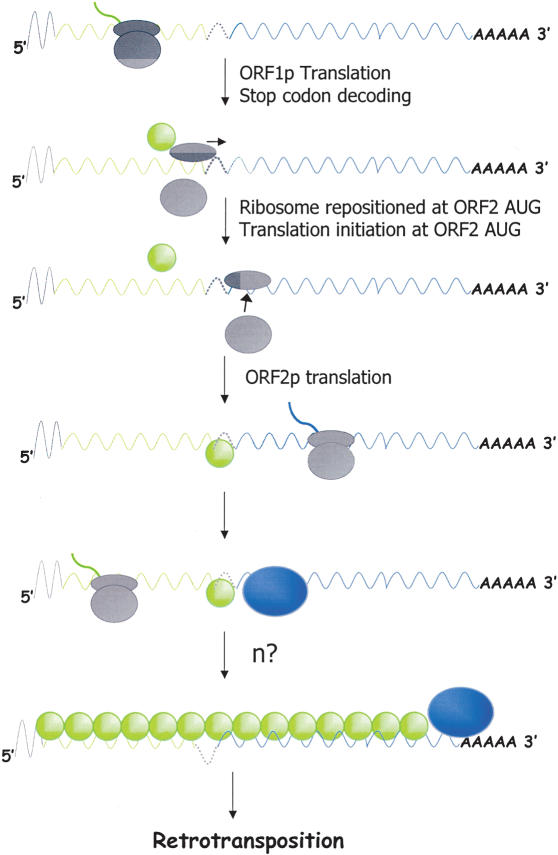Figure 9.
A model for ORF2p translation. The curved line represents the polyadenylated, bicistronic L1 mRNA. The gray line indicates the 5′ UTR. The green line indicates ORF1 coding sequences. The blue line indicates ORF2 coding sequences. The gray ovals indicate the 40S and 60S subunits of the ribosome, respectively. The green and blue circles indicate ORF1p and ORF2p, respectively. Upon reaching the ORF1 stop codon, ORF1p is released from the ribosome and the ribosome is dissociated. The 40S subunit remains associated with L1 RNA and scans through the inter-ORF spacer until it reaches the first in-frame AUG in ORF2. The ribosome then is reassembled to initiate ORF2p translation. We speculate that ORF2p (or perhaps ORF1p) binding to L1 RNA inhibits ORF2 translation. This would enable ORF1p to be made at greater quantities than ORF2p so that it can coat the transcript. Remarkably, our data indicate that ORF2p translation requires a nonspecific, translatable upstream ORF and that ORF2p translation can initiate from a non-AUG codon. Other details of the model are summarized in the text.

